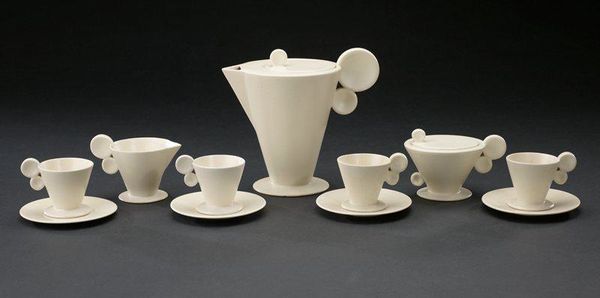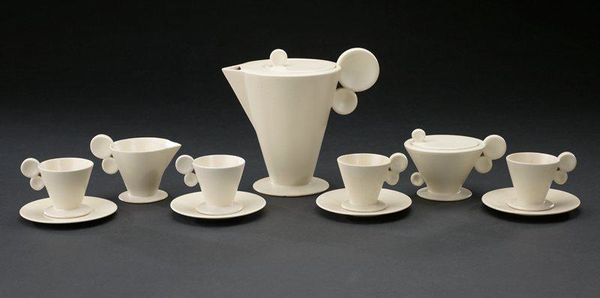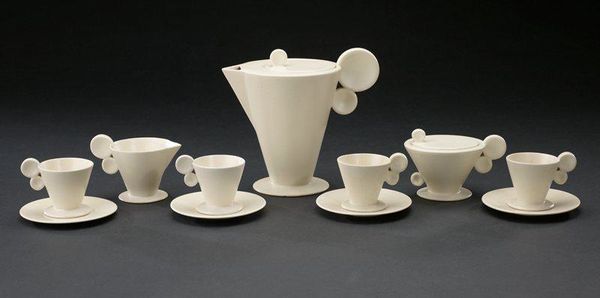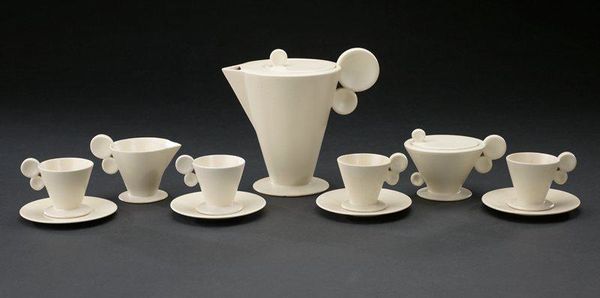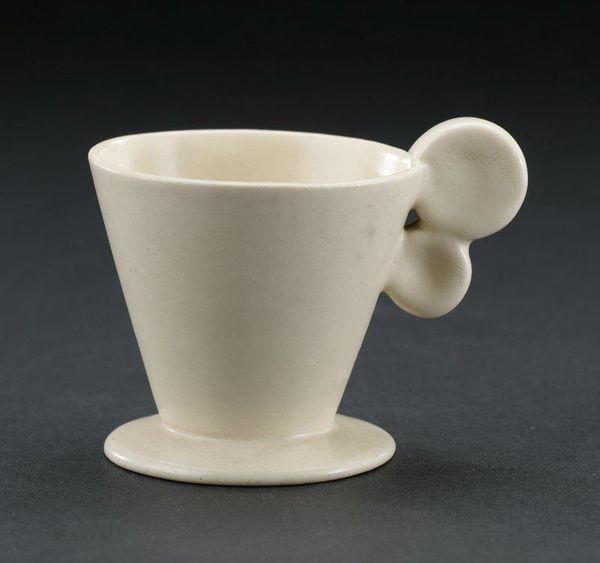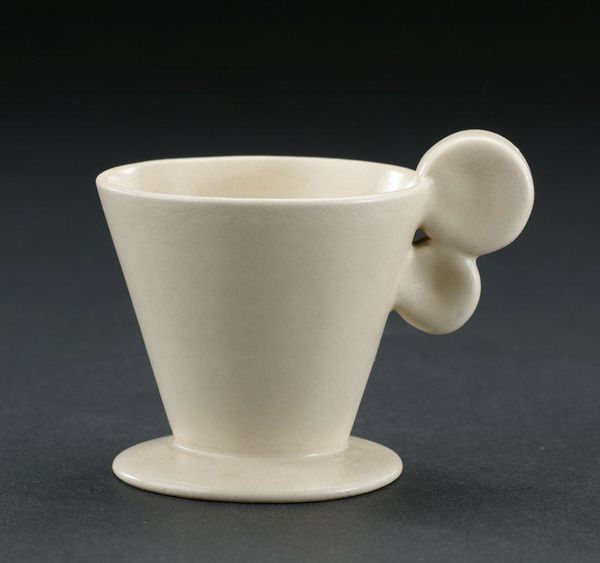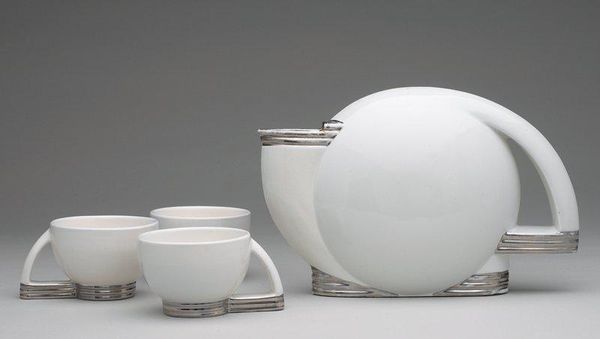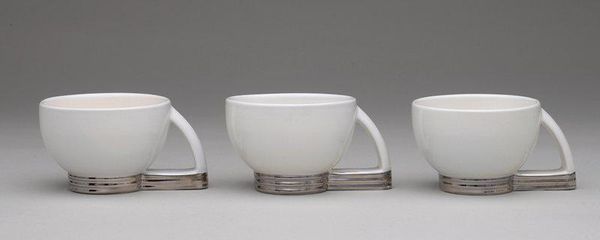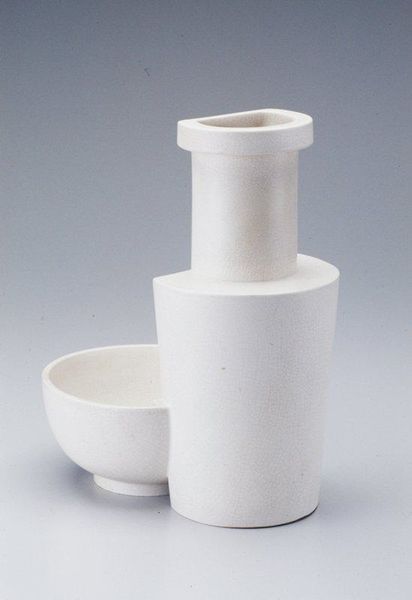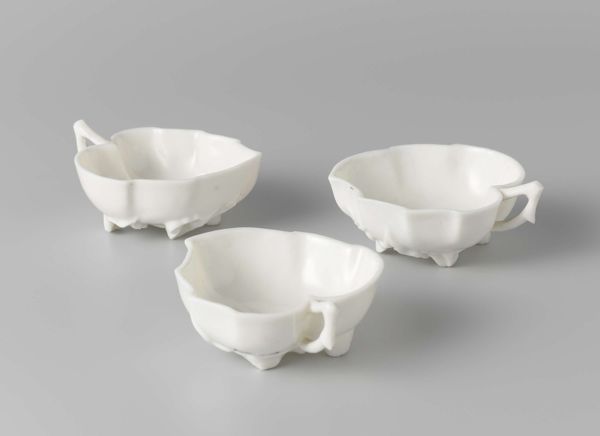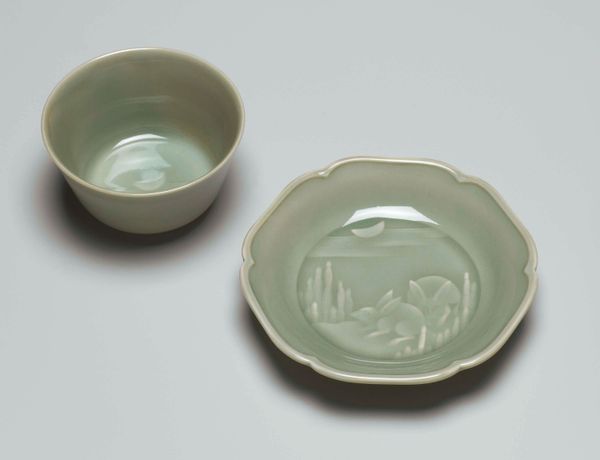
Cup and saucer from a tea service c. 1930
0:00
0:00
ceramic
#
art-deco
#
ceramic
Dimensions: 2 3/8 x 2 3/8 x 3 1/8 in. (6.03 x 6.03 x 7.94 cm) (cup)
Copyright: No Known Copyright
Editor: We're looking at a tea service made of ceramic, likely porcelain, circa 1930, by Margarete Heymann-Marks Löbenstein. It’s currently held at the Minneapolis Institute of Art. What immediately strikes me is how the handles and the teapot's lid use these spherical forms – it’s almost playful! How do you interpret this piece? Curator: The porcelain itself speaks volumes. During this period, mass production of such wares became more accessible. But Löbenstein’s design elevates this, nodding towards luxury while hinting at everyday use. Consider the material's journey, from the clay mine to a functional object within a domestic space. What kind of labor do you think went into its creation? Editor: Well, the smoothness and precision of the forms suggest skilled hands and possibly molds for some parts, maybe a small workshop setting? The streamlined shapes make me think of the Art Deco period, valuing machine production and sleek design. Curator: Precisely! The streamlined Art Deco style emphasizes modern machinery and geometric form. However, Löbenstein likely maintained a level of hand-craftsmanship, blurring the lines between industrial and artisanal production. What impact did the increasing access to mass production have on traditional crafts like pottery at the time? Editor: I imagine it presented challenges and opportunities. Maybe some artisans feared obsolescence, while others embraced new techniques and designs. So, the simple forms may indicate both a practical production choice and a reflection of the time's fascination with efficiency. Curator: Exactly. By exploring the conditions of production, we uncover a fascinating intersection of material availability, artistic expression, and the evolving role of the artisan in a rapidly changing world. This seemingly simple tea set really tells us so much about labor and its relation to commerce. Editor: I see how understanding the materials and processes sheds new light on appreciating its historical context and intended consumer. Thanks for that.
Comments
No comments
Be the first to comment and join the conversation on the ultimate creative platform.
